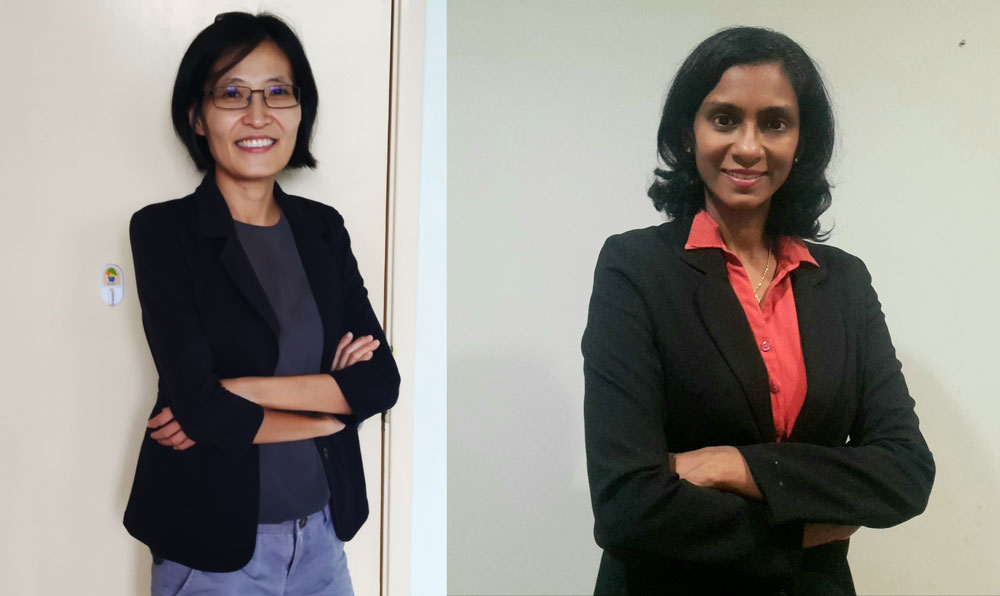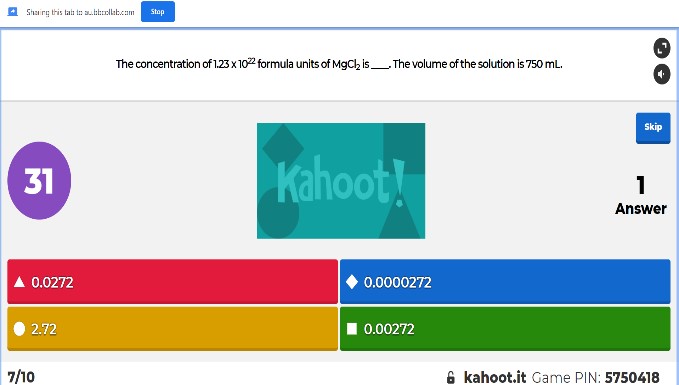With the technological rise in the era of IR4.0 and its integration into our daily lives, the lecturing landscape for tertiary education institutions is rapidly changing, and this process has been further expedited by the spread of COVID-19 since last year.
Dr Chong Mee Yoke (from left) and Ms Lalita Ambigai Sivasamugham, two of the twelve winners of the INTI Teaching Innovation Award 2020.
During this challenging time, learning continuity for the students is the primary concern among educators. How well educators can enhance students’ learning experiences very much lies in his or her innovativeness in manoeuvring blended and online teaching technology.
To know more about how these work, INTI’s Teaching & Learning (T&L) specialists and lecturers who advocate for new technologies and good practices in course design, shared their thoughts on how to innovatively apply technologies and methods that transcend ‘traditional’ classroom instruction.
“Our lecturers are well equipped to teach online as we have been practising blended learning since 2015. However, given the circumstances that we faced since last year, we further enhanced our lecturer’s capabilities for asynchronous and synchronous online teaching and learning by organising more than 300 training webinars to level up their skill sets,” stated Azlina Che Ani, Director of Teaching & Learning for INTI International University & Colleges.
Synchronous and asynchronous learning are two categories of broadly grouped online learning methods. While synchronous learning is online or distance education that happens in real-time, often with a set class schedule, asynchronous learning does not require real-time interaction. Content is instead made available online for students to access when it best suits their schedules.
“For the College chemistry and General chemistry lab courses that I lecture, both have been incorporated with synchronous and asynchronous teaching since the August 2020 semester. The synchronous teaching is conducted thrice per week via Blackboard Collaborate Ultra, which encompasses two lectures and a laboratory class. Whereas the asynchronous teaching consists of non-graded online quizzes and graded assignments that are adopted into the courses,” explained Dr Chong Mee Yoke, Senior Lecturer, Center for American Education, INTI International University, Nilai.
Dr Chong indicated that some elements of innovation in teaching that she employed included using Google slides, Youtube or recorded videos, Kahoot, Genial.ly, Padlet and PHeT simulations. These had been incorporated in the synchronous learning to enhance the learner’s engagement which led to the improvement in their grades.
An example of the use of Google slides for Dr Chong Mee Yoke’s chemistry lecture.
“My students enjoyed both Kahoot, a game-based learning platform, and Google slides. The students liked Kahoot because it is fun with various background music, competitive and able to receive immediate feedback from the instructor after each question. On the other hand, the use of Google slides during synchronous learning enables them to express their understanding by solving the problems,” said Dr Chong, who has been lecturing at INTI for the past 12 years and was also one of the winners of the INTI Teaching Innovation Award 2020.
Initiated in 2015 and organised on two cycles a year, this award aims to recognize faculty members who use blended and online learning technology effectively through the quality of course design and delivery, innovative practices and well-thought-out learning activities, originality of ideas and creativity that lead to positive impact and measurable improvement in the students’ learning.
Another winner from the same campus, Ms Lalita Ambigai Sivasamugham, Senior Lecturer, Faculty of Health and Life Sciences (FHLS), cited the innovation factors in her lecture included the use of augmented reality in the generation of e-posters. “Despite being a new tool, the students in the Microbiology Class of August 2020 learnt how to utilize this tool to produce an impactful poster.”
Besides that, virtual simulations of labs were also used for the first time in Lalita’s Principles of Biology 1 and Microbiology lectures in August 2020. This enabled students to have the closest application to the physical lab sessions during the lockdown, ensuring that their lab learning outcome could be achieved.
“Students were required to produce videos showcasing their experiments on catalase test using chicken liver extracts during the synchronous online lab session. This not only enhanced their learning, but also got them to think creatively to complete the experiment using materials at home!” said Lalita.
According to Lalita, even though she is very much a “people-person” who prefers to interact with students face to face, she kept her focus on delivering knowledge to her students despite the unforeseen odds by exploring tools in Blackboard Collaborate Ultra such as whiteboard canvas, polls and the breakout sessions.
“These not only helped to increase student engagement during the synchronous online session, but also enabled me to gauge students learning outcomes on the subject matter,” she elaborated.
Lalita appreciated the webinar training sessions organised by INTI’s T&L trainers, as it covered a wide range of online-related approaches and tools, which ultimately helped her to diversify how she shared knowledge with her students.
“I have put what I have learned into practice, to keep our Gen Z students paying attention to the course content. Also, I have learned to produce a good set of instructions for the online test and final examination to minimise plagiarism,” said Lalita who has been lecturing at INTI for more than 15 years.
Having served on the T&L team for many years, Azlina echoed Lalita’s points on the outcome of the T&L training and stressed the main purpose of setting up this teaching innovation award.
“The aim of the award is to challenge our educators to innovate how they are engaging students and to drive INTI’s commitment in providing quality education to greater heights,” she concluded.

